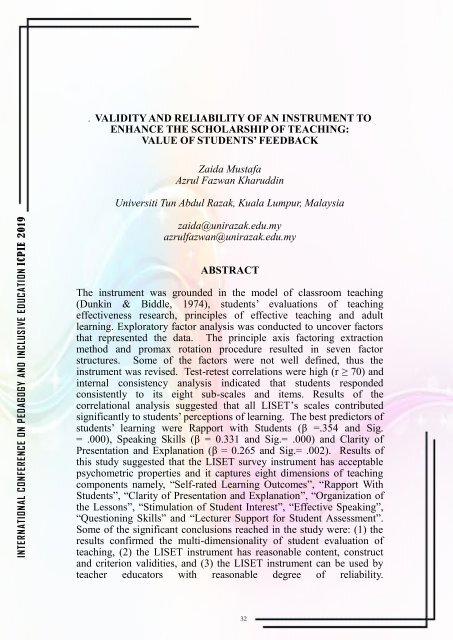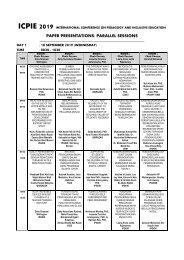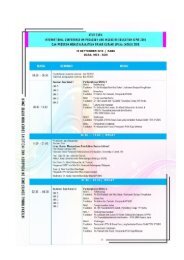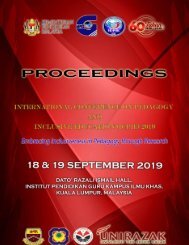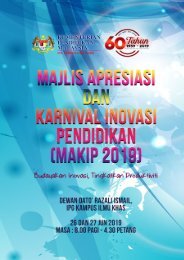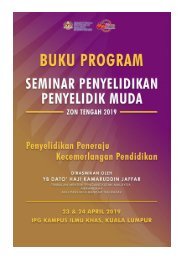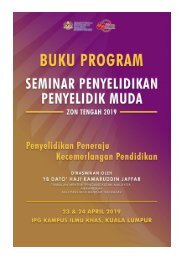BukuProgramICPIE_2019-13Sept2019
Create successful ePaper yourself
Turn your PDF publications into a flip-book with our unique Google optimized e-Paper software.
INTERNATIONAL CONFERE NCE ON PEDAGOGY AND INCLUS I VE EDUCATI ON I CPIE <strong>2019</strong><br />
. VALIDITY AND RELIABILITY OF AN INSTRUMENT TO<br />
ENHANCE THE SCHOLARSHIP OF TEACHING:<br />
VALUE OF STUDENTS’ FEEDBACK<br />
Zaida Mustafa<br />
Azrul Fazwan Kharuddin<br />
Universiti Tun Abdul Razak, Kuala Lumpur, Malaysia<br />
zaida@unirazak.edu.my<br />
azrulfazwan@unirazak.edu.my<br />
ABSTRACT<br />
The instrument was grounded in the model of classroom teaching<br />
(Dunkin & Biddle, 1974), students’ evaluations of teaching<br />
effectiveness research, principles of effective teaching and adult<br />
learning. Exploratory factor analysis was conducted to uncover factors<br />
that represented the data. The principle axis factoring extraction<br />
method and promax rotation procedure resulted in seven factor<br />
structures. Some of the factors were not well defined, thus the<br />
instrument was revised. Test-retest correlations were high (r ≥ 70) and<br />
internal consistency analysis indicated that students responded<br />
consistently to its eight sub-scales and items. Results of the<br />
correlational analysis suggested that all LISET’s scales contributed<br />
significantly to students’ perceptions of learning. The best predictors of<br />
students’ learning were Rapport with Students (β =.354 and Sig.<br />
= .000), Speaking Skills (β = 0.331 and Sig.= .000) and Clarity of<br />
Presentation and Explanation (β = 0.265 and Sig.= .002). Results of<br />
this study suggested that the LISET survey instrument has acceptable<br />
psychometric properties and it captures eight dimensions of teaching<br />
components namely, “Self-rated Learning Outcomes”, “Rapport With<br />
Students”, “Clarity of Presentation and Explanation”, “Organization of<br />
the Lessons”, “Stimulation of Student Interest”, “Effective Speaking”,<br />
“Questioning Skills” and “Lecturer Support for Student Assessment”.<br />
Some of the significant conclusions reached in the study were: (1) the<br />
results confirmed the multi-dimensionality of student evaluation of<br />
teaching, (2) the LISET instrument has reasonable content, construct<br />
and criterion validities, and (3) the LISET instrument can be used by<br />
teacher educators with reasonable degree of reliability.<br />
32


